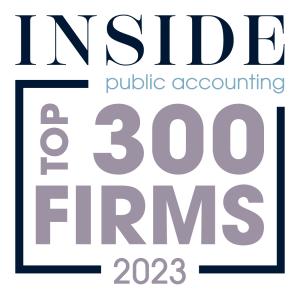In the current financial crisis, economic worries are impacting businesses across the country. From customer cutbacks and lower demand for products and services to increased costs of business, many organizations are suffering from the downfall of the market. At the same time, individuals are also impacted as they grapple with layoffs, foreclosures and rising expenses.
Also, consider the latest statistics. According to the Association of Certified Fraud Examiners’ 2008 Report to the Nation, U.S. organizations lose 7% of their annual revenues to fraud. This is an increase of two percent from their 2006 reported figure. Furthermore, the median loss caused by the occupational frauds in the study was $175,000. This study was done before the current economic downturn, and therefore these numbers are expected to steadily increase.
What business owners do not realize is that as their employees’ financial pressures increase, so do the chances that their employees will steal from them. The reason for this has to do with what fraud examiners refer to as the “fraud triangle.” Donald Cressey, a researcher from Indiana University, did extensive research on the subject of embezzlement and the culprits whom he referred to as “trust violators.” Cressey’s research is still used as the classic model of occupational fraud. His conclusions have become known as the “fraud triangle”.
According to Cressey, employee theft or embezzlement begins when the person is faced with some type of pressure. This could be a financial predicament, such as threat of foreclosure, or others that require funding such as a medical issue, drug or alcohol use, gambling, shopping addictions and even extramarital affairs. When faced with this pressure, an otherwise trustworthy employee will take note of perceived opportunities within the company to embezzle money. Once this happens, the third component of the triangle – rationalization — takes place. The employee may convince himself or herself that he or she is only “borrowing” the money and will pay it back. Of course in most fraud cases, this doesn’t happen.
In today’s economic situation, management may not know that the company’s trusted bookkeeper is facing foreclosure or that the accounts receivable clerk’s husband lost his job last month and that they can’t make ends meet. And while management may be unaware of their vulnerability to embezzlement – the accounting staff are aware, and they will take advantage of the weaknesses if they can rationalize it and get away with it.
Fraud and embezzlement can occur in many ways. Aside from outright theft of cash, checks, inventory, tools and supplies, embezzlement can occur through creative methods such as paying expenses to shell companies maintained by the perpetrator, paying personal expenses with company funds, paying the same invoice twice and then accepting vendor kickbacks or pocketing the refund, paying non-existent employees and keeping the check, and offering unauthorized customer concessions or credits, just to name a few examples. In addition, managers may falsify reports or purposely not pay expenses in order to boost the perceived profitability of the business if they are compensated based on company performance.
There are many ways to prevent fraud from happening in your business. The following are some ways in which you can reduce your risk of employee theft. These tips will help in any business.
Identify where you are vulnerable
The key to preventing fraud is identifying the weaknesses in your business structure that lend themselves to this type of activity. By closing fraud opportunities within your business you can keep honest employees honest and at the same time, discourage dishonest ones from stealing. Take advantage of seminars on this topic and become educated about fraud. In addition, a qualified fraud examiner can conduct a study of your business operations and will be invaluable in determining where your weaknesses are.
Examine your business culture
Although management assumes this, it should be communicated that fraudulent activities will not be tolerated. Business owners should not create an atmosphere of permissiveness. Employees should be encouraged to report any infraction, and disciplinary action should be taken when improprieties do take place. Allowing infractions to go unpunished gives a message to all employees that the behavior is acceptable and they will not blow the whistle on future crimes.
Be careful who you hire
An important safeguard in any business is screening prospective employees. It is important to conduct background checks on all prospective employees. However this only gives limited assurance and is not an end to fraud prevention. While in some embezzlement cases it was discovered that the culprit had a history of such crimes, for many convicted fraudsters, the theft was their first offense. Still, the small investment before hiring can help to save much heartache down the road.
Segregation of duties
The most important deterrent to fraud and embezzlement is maintaining appropriate checks and balances referred to as segregation of duties. This means that one person should not be given too much control over cash and reporting functions.
In segregating duties, business owners must make sure that employees with recordkeeping duties do not also handle cash and invoicing. In weak companies, for example, one person is given the task of endorsing checks, filling out the deposit slips, taking the deposit to the bank and posting the receipts to the accounting system. The existence of one person performing all these functions makes the company susceptible to fraudulent activity by whoever handles these functions – no matter how trustworthy. In this example, the performer of these functions could take incoming cash and checks, deposit them into an account that he or she opened and then manipulate the respective customers’ accounts to show that they had paid.
Watching the ship
While delegation is essential, do not leave complete responsibility of watching the ship to others. The business owner should be the first one to open the monthly bank statements. Preferably, the statements should be mailed directly to the owner’s home address. Look at the cancelled checks, and question those that are unfamiliar. Be known for your inquisitiveness. Additionally, review management reports and financial statements closely and look for inconsistencies as well as unusual or missing expenses. If this is difficult, it should be considered necessary to retain an outside professional to periodically review these reports.
By watching your business closely and putting safeguards in place, you will go a long way in saving your hard-earned revenue and your bottom line.
David Landman is a CPA and Certified Fraud Examiner for Gorfine, Schiller & Gardyn, P.A. in Owings Mills, Maryland. As senior manager, he specializes in assisting attorneys in litigation and business owners in fraud prevention . He also gives fraud presentations to all types of businesses. He may be reached at 410-581-6823 or dlandman@gsg-cpa.com.





